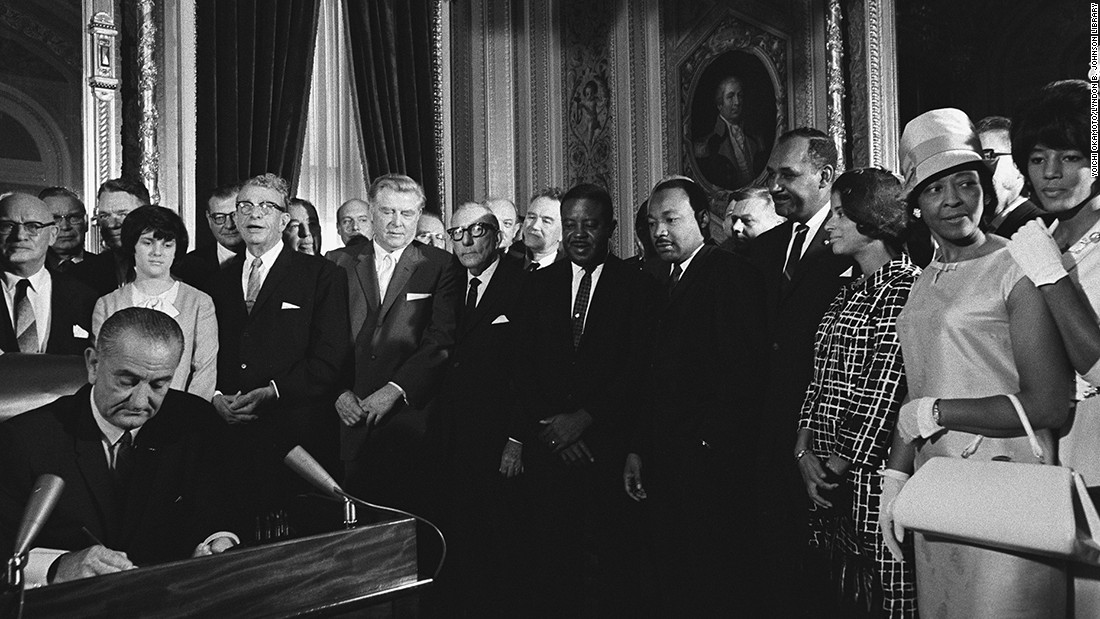- by foxnews
- 26 Nov 2024
Voting Rights Act Fast Facts

Here is a look at the Voting Rights Act of 1965, which serves to protect and enforce the 14th and 15th Amendments. It was enacted in response to voter suppression in the 1960s by state governments, local governments and law enforcement.
Original jurisdictions: Alabama, Alaska, Georgia, Louisiana, Mississippi, South Carolina and Virginia. Also, subdivisions, mostly counties, in Arizona, Hawaii, Idaho and North Carolina.
Jurisdictions are made based on a formula containing two elements: If less than 50% of the voting age population is registered to vote by November 1, 1964, or if less than 50% voted in the 1964 presidential election. It also guarantees the right to register and vote to citizens with "limited English proficiency."
Section 2: States the right to vote cannot be denied on the basis of race or color.
Section 3: Upholds the ability to enforce the 15th Amendment.
Section 4: Says citizen cannot be denied the right to vote for failed compliance with devices such as literacy tests. It also designates the formulated jurisdictions outlined in Section 5. The requirement for preclearance of voting changes was ruled unconstitutional in a 2013 US Supreme Court decision. "The effect of the Shelby County decision is that the jurisdictions identified by the coverage formula in Section 4(b) no longer need to seek preclearance for the new voting changes, unless they are covered by a separate court order entered under Section 3(c) of the Voting Rights Act."
Section 5: This section freezes "changes in election practices or procedures in covered jurisdictions" until the new procedures have been subjected to review. Review can only be done by the US Attorney General or by filing a lawsuit before the US District Court for the District of Columbia. Yet Section 5 is basically unenforceable as there is no longer a preclearance requirement in Section 4.
Read More: America has a long history of resisting multiracial democracy.
March 7, 1965 - Bloody Sunday - About 600 non-violent voting rights marchers heading to Montgomery, Alabama's state capital, are attacked by state troopers in Selma.
March 15, 1965 - President Lyndon Johnson, in a speech before a joint session of Congress says: "There is no constitutional issue here. The command of the Constitution is plain. There is no moral issue. It is wrong, deadly wrong, to deny any of your fellow Americans the right to vote in this country."
August 6, 1965 - Is signed into law by President Johnson to protect and enforce the 15th Amendment.
1970 - Congress extends provisions for five years, changing the formula in Section 4 to reflect 1968 (instead of 1964). Coverage is added in jurisdictions within 10 more states: Alaska, Arizona, California, Connecticut, Idaho, Maine, Massachusetts, New Hampshire, New York and Wyoming. Connecticut, Idaho, Maine, Massachusetts and Wyoming win "bailout" lawsuits.
1975 - Congress extends provisions for seven years, changes the formula to 1972 and broadens the discrimination description as also encompassing American Indians, Asian Americans, Alaskan Natives or people of Spanish heritage. This addition to the formula essentially covers Alaska, Arizona and Texas, and includes parts of California, Florida, Michigan, New York, North Carolina and South Dakota.
1982 - Congress extends the special provisions in Section 4 for 25 years, but makes no changes.
2006 - Congress renews special provisions and extends the act until 2031.
June 25, 2013 - The US Supreme Court decides (5-4) that formulated jurisdictions under Section 5 no longer have to have new voting laws pre-cleared by the attorney general or the federal district court in the District of Columbia. Chief Justice John Roberts explains that "our country has changed" and the formula "no longer characterize(s) voting in the covered jurisdictions."
February 11, 2015 - An amendment to the Voting Rights Act (VRA) of 1964 is introduced to the House of Representatives. The Voting Rights Amendment Act of 2015 is focused on updating a portion of the law after the US Supreme Court struck down an "outdated" portion of VRA that protected racial discrimination in voting.
March 7, 2015 - President Barack Obama signs legislation awarding the Congressional Gold Medal "to the Foot Soldiers who participated in the Bloody Sunday, Turnaround Tuesday, or the final Selma to Montgomery Voting Rights March in March of 1965, which served as a catalyst for the Voting Rights Act."
September 12, 2018 - The report, "An Assessment of Minority Voting Rights Access in the United States," is released by the US Commission on Civil Rights. The bipartisan agency concludes that new state laws are making it more difficult for minorities to vote. It also notes that the Justice Department has done less to challenge those discriminatory laws since the Supreme Court struck down a core element of the 1965 Voting Rights Act in 2013.
December 6, 2019 - The House of Representatives votes to pass the Voting Rights Advancement Act of 2019 (introduced February 26). The bill "establishes new criteria for determining which states and political subdivisions must obtain preclearance before changes to voting practices in these areas may take effect."
July 22, 2020 - The Voting Rights Advancement Act of 2019 is introduced in the Senate. It is renamed the John Lewis Voting Rights Advancement Act after the July 17 death of the congressman and civil rights leader.
July 1, 2021 - The US Supreme Court decides (6-3) that two provisions of an Arizona voting law that restrict how ballots can be cast do not violate the Voting Rights Act that bars regulations that result in racial discrimination. The ruling by the conservative-majority court will limit the ability of minorities to challenge state laws in the future that they say are discriminatory under the Voting Rights Act.
February 7, 2022 - In a 5-4 decision, the US Supreme Court allows a congressional map drawn by Alabama Republicans to remain in place, freezing a lower court ruling that said the map likely violates the Voting Rights Act by diluting the political power of African American voters.
June 8, 2023 - In a 5-4 decision, the US Supreme Court upholds a key section of the Voting Rights Act, ordering Alabama officials to redraw the state's congressional map to allow an additional Black majority district.
- by foxnews
- descember 09, 2016
The world's oldest Douglas fir trees have lived over 1,000 years
The Douglas fir, the state tree of Oregon, can grow incredibly tall and live impressively long. The oldest Douglas fir trees have lived to be over 1,000 years old.
read more


